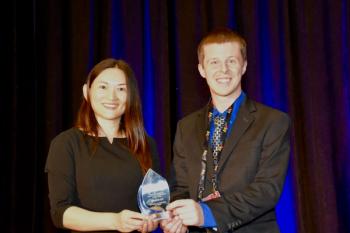
Greener Method Enables Accurate Elemental Determination in Carbon Nanotubes
A team of researchers has developed a greener and simplified method for determining elemental contaminants and metal catalyst residues in carbon nanotubes (CNTs) using ICP-OES.
In a recent study published in Spectrochimica Acta Part B: Atomic Spectroscopy, a greener and simplified method for determining elemental contaminants and metal catalyst residues in carbon nanotubes (CNTs) was demonstrated that addresses the limitations of traditional sample preparation techniques (1). The new method uses inductively coupled plasma optical emission spectrometry (ICP-OES) after a microwave-assisted digestion process and provides accurate results.
CNTs have gained significant attention for their exceptional properties and diverse applications. However, the quality and purity of CNTs are important variables that influence whether they can be used for various applications. The presence of elemental contaminants and metal catalyst residues in CNTs can affect their performance and pose potential risks (1).
In this study, the research team optimized a greener digestion protocol. The main goal was to enhance the overall sample preparation process. As part of the optimization process, the team used a diluted nitric acid solution combined with hydrogen peroxide. During microwave-assisted heating, a high air flow rate outside the digestion vessel was maintained. As a result, because of these adjustments, the team completed digestion of up to 100 mg of CNTs (1).
The researchers also evaluated the accuracy of their method by comparing the results with neutron activation analysis (NAA), and no statistical difference was observed (1). The limits of quantification (LOQ) ranged from 0.86 μg/g (cobalt) to 4.12 μg/g (calcium) (1). As a result, the proposed method not only enables reliable determinations of elemental contaminants and metal catalyst residues in CNTs, but it also adheres to the principles of green analytical chemistry. By providing a simpler and more environmentally friendly sample preparation technique, the the research team shows how CNT sample preparation can be optimized better. As a result, the research team rectified an issue frequently seen in routine quality control of CNTs by improving on the conventional protocols for CNT sample preparation.
The greener and simplified microwave-assisted digestion method developed by Mello and her team opens up possibilities for routine quality control of CNTs, allowing for more efficient analysis of elemental impurities (1). With its accurate results and reduced environmental impact, this method has the potential to advance the characterization and quality assessment of carbon nanotubes, supporting their safe and effective utilization in a wide range of applications.
Reference
(1) Bitencourt, G. R.; Krzyzaniak, S. R.; Pereira, L. S. F.; Bizzi, C. A.; Flores, E. M. M. Mello, P. A.Elemental determination in carbon nanotubes by inductively coupled plasma optical emission spectrometry after a greener and simple microwave-assisted digestion method. Spectrochimica Acta Part B: At. Spectrosc. 2023, 206, 106709. DOI:
Newsletter
Get essential updates on the latest spectroscopy technologies, regulatory standards, and best practices—subscribe today to Spectroscopy.




